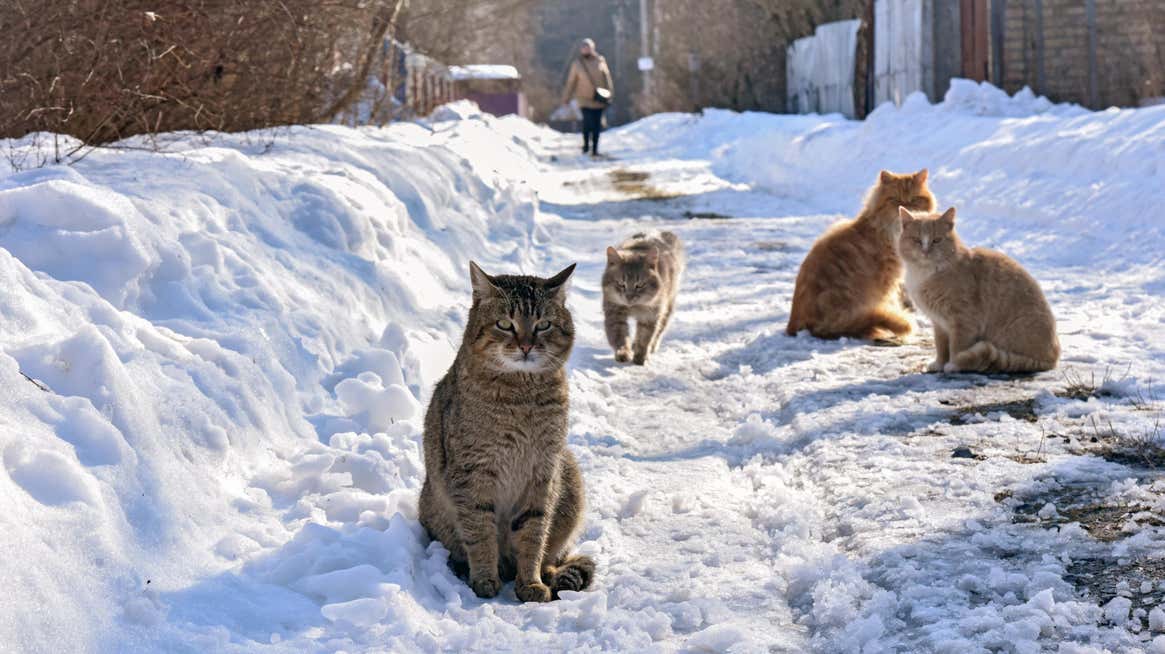chevron_left
-
play_arrow
NGradio So good... like you
If I Fits, I Sits: Starlink’s Internet Satellite Dishes Are Attracting Cats

SpaceX’s Starlink has been making steady gains with its fledgling satellite internet service, surpassing 100,000 terminals shipped in 2021 and showing promising improvements in performance after initial speed tests produced lackluster results. However, the company’s run into an unforeseen hiccup with its dishes: Cats love them.
“Starlink works great until the cats find out that the dish gives off a little heat on cold days,” tweeted Starlink user Aaron Taylor.
His recent image of five cats huddled together on top of a Starlink dish went viral.In the photo, the Starlink dish isinstalled at ground level and surrounded by snow. As noted by the Tesla- and SpaceX-focused news outlet and store Tesmanian, the dish’s Snow Melt Mode may be to blame. Launched in 2020, this feature enables dishes to use self-heating capabilities to prevent snow build-up from interfering with the signal—and apparently provides a toasty outdoor lounge space for critters.
Starlink works great until the cats find out that the dish gives off a little heat on cold days. pic.twitter.com/uyH3Kbqrie
— Aaron Taylor (@Tippen22) December 31, 2021
Another possible explanation: Cats are just assholes.When other users began suggesting alternative solutions to help keep the cats warm amid record heavy snowfalls, Taylor assuaged their concerns:
“They have free access to heated house and come and go as they please. They are there by their own choice,” he wrote on Twitter. He went on to say the cats will “voluntarily leave [the] heated cathouse” to catch some z’s on the dish. It happens whenever the sun is out regardless of temperature because “the internal dish heater warms from the bottom and the sun warms from the top.”
In short, these cats have plenty of other places to hide from the cold or lounge in the sun, but they choose to instead hunker down on a $499 terminal. As any cat owner can testify, that tracks.
Though excess weight could potentially damage the device, it remains unclear to what extent this kind of adorable infestation may have on the dish’s signal.
On Twitter, Taylor said all those furry butts parked on top of the dish succeeded in slowing down the service’s performance and interrupting movie live streams but didn’t cut off service completely. It looks like cats aren’t the only animals flocking to Starlink’s dishes, either. In response to Taylor’s tweet, another Twitter user shared a photo of a bird perched on one along with the caption: “Different species, same problem.”
To be fair, SpaceX can’t do much to prevent animals from holing up in its Starlink equipment aside from recommending users to install them in hard-to-reach places. Taylor said on Twitter that he plans to do just that, as the dish’s location on a concrete pad on the ground is only temporary as he finishes construction on a new home.
To date, SpaceX has deployed roughly 1,800 satellites as part of its goal to deliver high-speed internet to rural areas with Starlink. The company plans to ultimately have 42,000 of these low-orbit satellites floating up and running by mid-2027. In August, Starlink made headlines when Ookla, the company behind one of the most widely used internet speed tests, demonstrated it was much faster than other satellite internet services like HughesNet and Viasat and could almost rival fixed broadband when it came to upload and download speed tests.
After promises from SpaceX CEO Elon Musk for months and several missed deadlines, Starlink finally exited its beta phase in October. But the success was short-lived, as the ongoing worldwide chip shortage has bottlenecked production and delayed orders into late 2022 and 2023. At least now the company knows that its products can double as a cat home if it gets desperate.
Source: gizmodo.com
Written by: New Generation Radio
Similar posts
ΔΗΜΟΦΙΛΗ ΑΡΘΡΑ
COPYRIGHT 2020. NGRADIO




















Post comments (0)